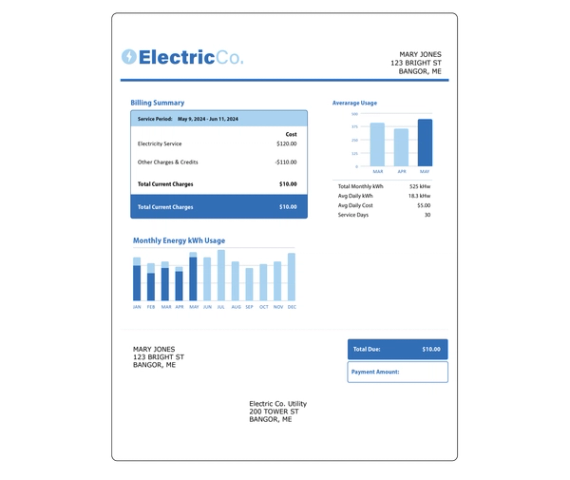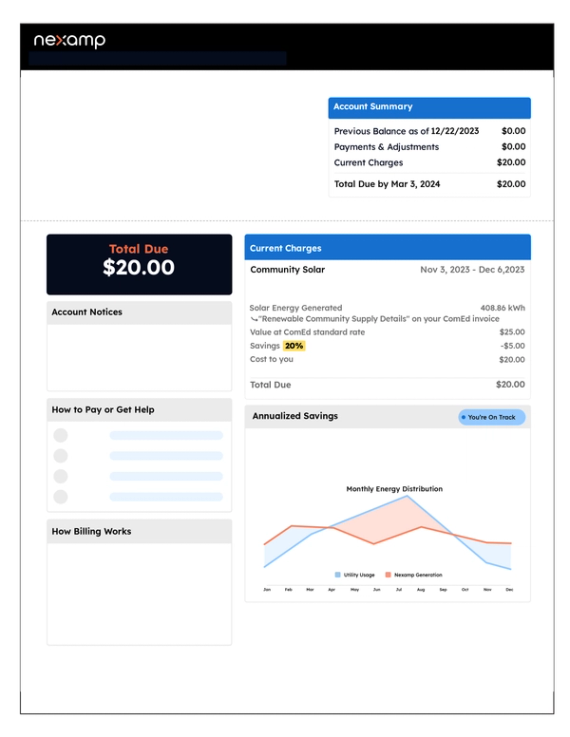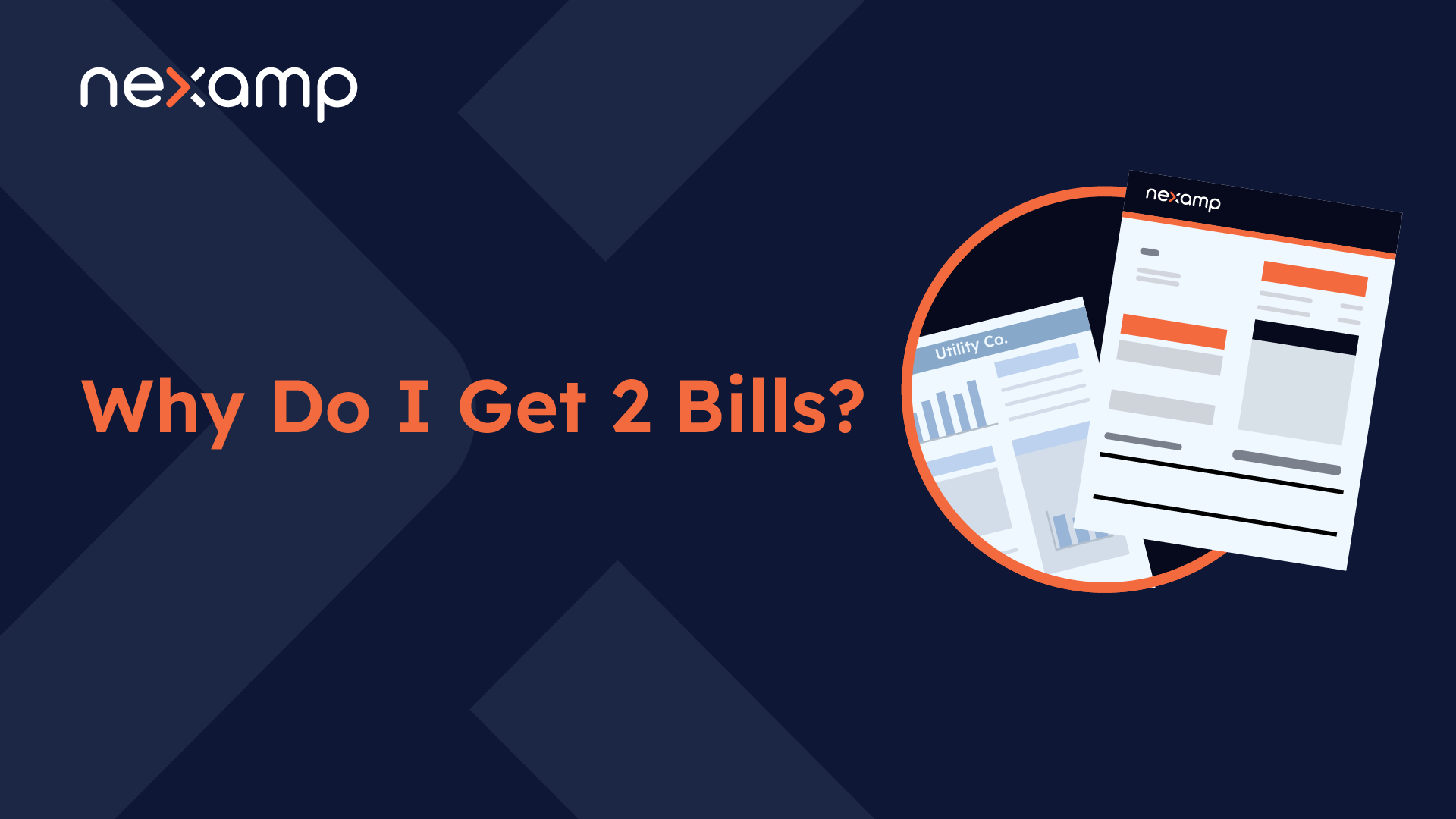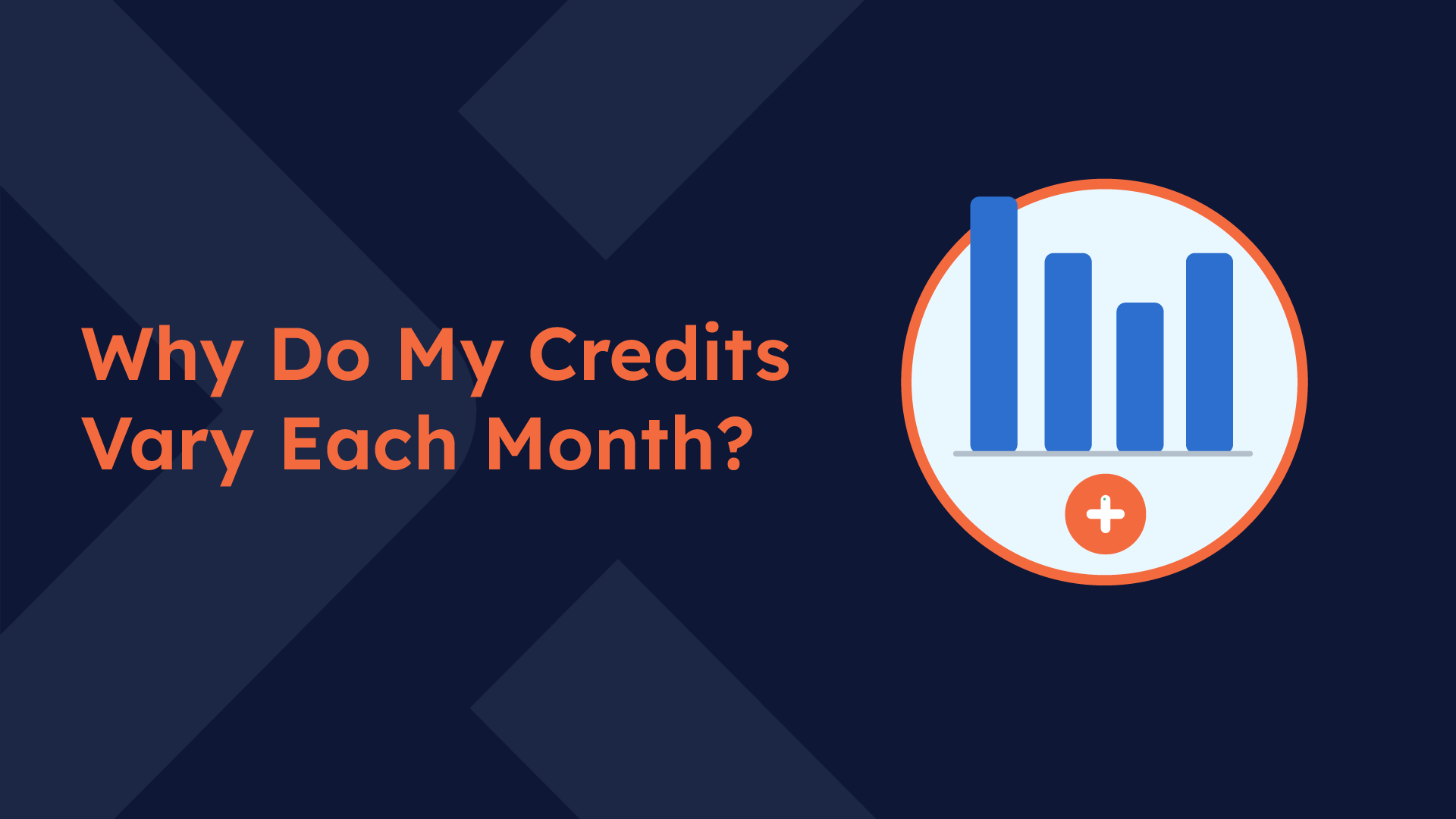What happens now that you are generating community solar credits?
Congratulations! Your Nexamp solar share is generating clean energy. This is an exciting milestone that helps you save on electricity while supporting renewable energy in your community. Now that you’re up and running, you may be wondering how everything works and what you can expect in the months ahead. Let’s break it down.
Community solar credits will now begin appearing on your utility bill
As your solar farm produces energy, you’ll begin to see community solar credits applied to your utility bill. These credits reduce what you owe to your utility. It typically takes two or three billing cycles for these credits to appear, so don’t be concerned if you don’t see them immediately.
Once the credits are applied, they’ll show up as a line item on your bill and will directly reduce your electricity costs. For example, if your solar share generates $100 in credits, those credits will directly reduce your energy charges by $100. If your bill is less than $100, the credits can be applied to your next bill. Note: If you live in Maine, your solar credits expire after 12 months.

Your first Nexamp invoice
About 30 days after community solar credits begin appearing on your utility bill, you’ll receive your first invoice from Nexamp. Moving forward you will receive two bills each month. While receiving two bills might feel unusual at first, it’s an essential part of how community solar works. By separating these bills, you can clearly track your savings and see the value of your participation in the program.

Your utility bill
Your utility bill shows your energy usage and the Nexamp community solar credits that lower how much you pay.

Your Nexamp invoice
Your Nexamp invoice shows what you owe Nexamp for the solar credits on your utility bill. Remember, you still pay for the credits, but you pay less than they are worth. It's like buying a $100 gift card for your electricity for only $85-$90. That difference is how you save.
Here’s a short video that explains why you receive two bills
Seasonal savings: What to expect
One of the unique aspects of solar energy is how production changes with the seasons. During the summer, when the days are longer and there is more sunlight, your solar farm will generate more energy and, in turn, more solar credits. This means you might see a $0 utility bill alongside a higher Nexamp invoice, since you're paying for all credits when they are generated.
However, if you generate more credits than you can use, you don’t lose them. They are instead “banked” and used during the winter when shorter days and less intense sunlight reduce the energy production from your solar share.
Over the course of a year, the higher production in sunny months offsets the lower production in winter, giving you an average annual savings of 10–15%. While your monthly savings may vary, the total savings at the end of the year reflect the full value of your solar share.
Here’s a short video that explains why savings are not the same each month
How to stay on top of your savings
Now that you are generating solar credits, it’s a good idea to review your utility bill and Nexamp invoice regularly. These documents provide a clear view of how solar credits are being applied and the savings they’re generating. If you have any questions about your bills or the program, our support team is available to help at support@nexamp.com.
Key takeaways
- Community solar credits will start to appear on your utility bill
It typically takes two or three billing cycles for these credits to appear, so don’t be concerned if you don’t see them immediately. - Two bills to track savings
About 30 days after community solar credits begin appearing on your utility bill, you’ll receive your first invoice from Nexamp. - Seasonal savings
While your monthly savings may vary due to seasonal variability, the total savings at the end of the year reflect the full value of your solar share.

